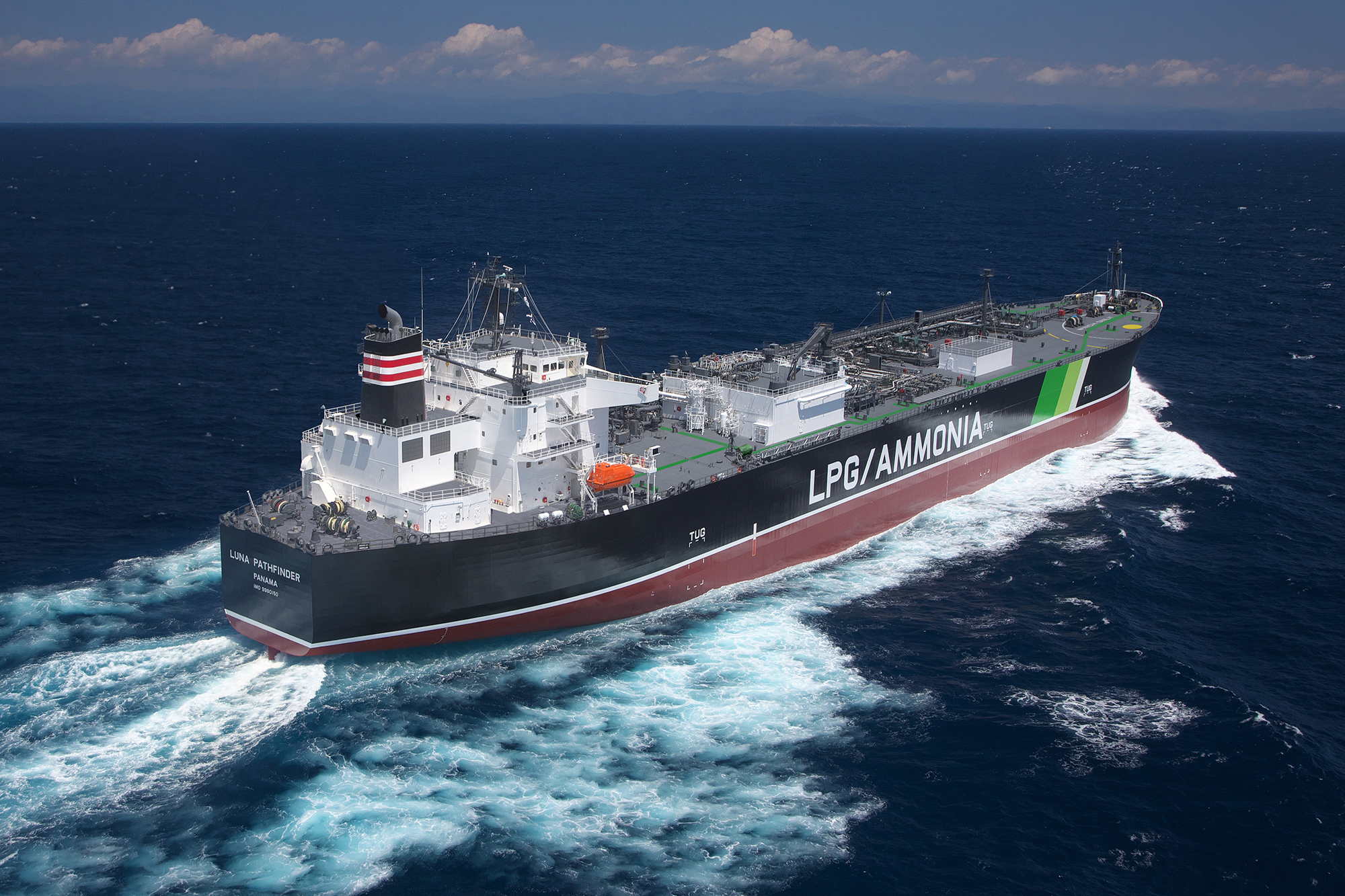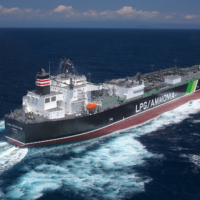Japan’s shipping and shipbuilding industries have long been the bedrock of the nation’s economy. Now they stand at a major crossroads.
These industries achieved a miraculous recovery from the catastrophic damage of World War II, becoming world leaders in the process. However, amid intensifying international competition and labor shortages, Hitoshi Nagasawa, president of the Japanese Shipowners’ Association, warned in a recent interview with The Japan Times, that without immediate action, the security of Japan’s maritime logistics — the nation’s lifeline — could be jeopardized. He also spoke about industrywide initiatives now underway to revitalize the sector.

Defeat in World War II dealt a devastating blow to Japan’s maritime and shipbuilding industries. The country lost a massive number of ships, and reportedly more than 30,000 merchant marine sailors were killed in action. Nippon Yusen Kaisha, a logistics giant founded in 1885 that Nagasawa serves as chairman and director of, alone lost 5,000 seamen in the war.
After the war, the industries experienced remarkable growth alongside the nation’s economic recovery. Nagasawa said that this growth was driven primarily by the rapidly increasing export power of Japan’s manufacturing sector, which benefited significantly from a weak yen from the mid-1960s to the mid-1980s.
However, the Plaza Accord of 1985 pushed these industries into crisis once again. This joint agreement, signed by France, West Germany, Japan, the United Kingdom and the U.S. at the Plaza Hotel in New York City, aimed to devalue the U.S. dollar against the currencies of the other signatory countries.
“In international shipping, though, nearly all revenue was dollar-denominated, while almost all costs were in yen. Due to the yen’s sharp rise after the Plaza Accord, revenue was cut by about half,” Nagasawa said.
As a result, the entire industry underwent a massive restructuring, and the number of Japanese seafarers on oceangoing vessels plummeted from over 57,000 in 1974 to just above 2,600 in 2005.
Nagasawa explained that shipping companies began hiring foreign crews to shift expenses from yen to dollars, thereby addressing labor shortages on Japanese vessels while keeping costs down. Some of the major shipping companies either established their own training institutions for sailors or partnered with existing ones in the Philippines.
However, this led to a dramatic decrease in the proportion of Japanese seafarers compared to foreign crew. Of the nearly 60,000 crew members estimated to work on vessels operated by the Japanese merchant fleet, Japanese sailors account for a mere 1.5%, as of May 2024. Nagasawa considers this an alarming figure for a country that relies on maritime transport for 99.6% of its trade volume (as of 2023).
Against this backdrop of crisis, three major shipping companies — NYK, Mitsui O.S.K. Lines and Kawasaki Kisen Kaisha — along with the Japanese Shipowners’ Association, announced in July that they had initiated discussions on donating a large training vessel to the Japan Agency of Maritime Education and Training for Seafarers, the nation’s largest provider of seafarer education.
The shipbuilding industry is also facing a crisis. During the period of high economic growth, shipbuilding was Japan’s flagship industry, attracting top talent and dominating the global market.
However, it gradually lost its international competitiveness due to rising labor costs after the Plaza Accord strengthened the yen, while South Korea and China grew their shipbuilding industries as part of their national policies. As a result, Japan’s share of new contracts in the global shipbuilding market in 2024 stood at a mere 8%.
In 2023, 57% of all shipbuilding orders by Japanese owners were placed in shipyards outside Japan. In 2024 the figure had dropped to 37%, but that’s still too high, according to Nagasawa.
“At the very least, we must ensure we can build our own ships needed to transport what Japan requires. Given the current international situation, we can’t predict how any country might act,” Nagasawa warned.
He then emphasized that strengthening the “maritime cluster,” which joins Japan’s shipping, shipbuilding and marine equipment manufacturers, is an urgent priority for the nation’s economic security. Collaborations are already underway within and among the related industries, focusing on moving beyond competition to build a solid foundation that will protect the nation’s future.
One such initiative is the joint study started by seven leading shipping and shipbuilding companies to establish standard specifications and designs for liquefied carbon dioxide carriers. Nagasawa hopes to use this partnership as a starting point to attract talent for developing new technologies and next-generation vessels.
The companies hope to collectively create an appealing environment for research, development and manufacturing that will attract highly skilled professionals more efficiently than each company could individually.
Nagasawa also pointed out that in addition to these large corporations, there are shipbuilding companies of various sizes — including family-run businesses. Rather than all of them competing on price by producing the same products to meet the needs of every client, Nagasawa believes it is crucial for these companies to specialize in their areas of expertise and divide roles.
He said, “This is a necessary shift to strengthen the entire industry so that we can gain cost competitiveness against overseas companies.” He believes it is possible to create such a system not by imposing it, but by establishing a self-governing “order” within the industry — something Japan excels at.
The shipping and shipbuilding industries are also facing a new challenge: responding to climate change. In October, the International Maritime Organization aims to formally adopt measures, including a new fuel standard for ships and a global pricing mechanism for emissions, in line with its goal of reducing greenhouse gas emissions from ships to net zero by or around 2050.
Nagasawa explained that the industry is accelerating its shift toward using liquefied natural gas and methanol as fuels instead of conventional heavy oil, while also pursuing research on technologies utilizing ammonia, biofuel, hydrogen and wind power. Earlier this year, NYK successfully conducted demonstration tests of an ammonia-fueled tugboat, and the company is participating in a coalition of several companies currently building an ammonia-fueled vessel to transport ammonia, scheduled for completion in 2026.
“Research is also underway within the industry on methods to capture and store carbon dioxide aboard ships,” he said, emphasizing the need to research and develop a wide range of technologies, since there is no single solution to achieving net-zero carbon emissions.
Nagasawa believes that achieving outstanding results in these fields is the best way for Japan’s maritime industry to regain a strong global presence.
“We should make it a national policy to use green technology to secure the top share of the market for new-generation vessels, as well as 20% of the global share in shipbuilding overall,” he said.





